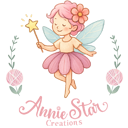Best Yarns for Amigurumi:
A Practical Guide
When it comes to crocheting amigurumi, the type of yarn you use makes a huge difference—not just in how the finished piece looks, but also in how it feels, how durable it is, and how easy it is to work with.
Over the years, I’ve experimented with lots of different yarns for my amigurumi projects. From smooth cottons to fuzzy chenilles, each type brings its own charm—and knowing which yarn to use can really help bring your handmade toys to life. Whether you’re just getting started or looking to try something new, here’s a guide to the most popular types of yarn for amigurumi:
🧵 1. Cotton Yarn
Best for: Detailed, classic amigurumi
Cotton yarn is one of the most popular choices for amigurumi, and for good reason! It’s durable, holds its shape beautifully, and shows off stitch definition clearly—perfect for clean, structured toys.
Pros:
-
Doesn’t pill
-
Easy to frog (undo stitches)
-
Great for tight, defined shapes
Popular brands: YarnArt Jeans, Scheepjes Catona, Paintbox Cotton DK
💡 Tip: Cotton yarn is great if your toy has small parts or needs to hold its shape, like tiny limbs, ears, or accessories.
🧸 2. Acrylic Yarn
Best for: Budget-friendly, beginner-friendly toys
Acrylic is soft, affordable, and easy to find in just about any color. It’s a great option if you’re just starting out or if you’re making toys for everyday play.
Pros:
-
Widely available and inexpensive
-
Soft and forgiving on the hands
-
Comes in lots of colors
Popular brands: Red Heart Super Saver, Stylecraft Special DK, Hobby Lobby “I Love This Yarn”
💡 Tip: If you’re using acrylic, try to keep your stitches tight to avoid gaps between them—especially if you’re stuffing your toy a lot.
🐻 3. Velvet & Chenille Yarn
Best for: Plushies, huggable soft toys
These fuzzy yarns are SO satisfying to squish! Velvet or chenille yarn creates big, fluffy plushies with a luxurious texture. They’re especially loved for larger toys and cuddle-sized creations.
Pros:
-
Super soft and plushy
-
Works up quickly with larger hooks
-
Amazing for kids’ toys and sensory comfort
Popular brands: Himalaya Dolphin Baby, Bernat Velvet, Premier Parfait Chunky
Cons:
-
Can be hard to see stitches
-
Sheds a bit when frogged
💡 Tip: If you’re struggling to see your stitches, try using a smaller project and stitch markers to help guide your rounds.
🐑 4. Blended or Specialty Yarns
Best for: Unique textures or effects
Blended yarns—like cotton-acrylic mixes or yarns with sparkles or fluff—can add personality to your amigurumi. While they might not be the go-to for beginners, they’re a fun way to add flair or special features to your toys.
Pros:
-
Great for unique looks (e.g., sparkly unicorns, fluffy animals)
-
Often softer than pure cotton
Cons:
-
Sometimes less predictable in tension or structure
💡 Tip: Use these for accents or accessories, like hair, wings, or clothing for your amigurumi.
Yarn Weights that Work
| Weight | Label Code | Why It’s Good for Toys | Common Hook Range* |
|---|---|---|---|
| DK / Light #3 | Double knitting | Fine stitches, good detail without adding hours of work | 3.0 – 3.5 mm |
| Worsted / Medium #4 | 4‑ply / Aran | Versatile, widely stocked, hides stuffing well | 3.5 – 4.0 mm |
| Sport #2 (optional) | Baby / Fine | Miniatures and keychains; lighter finish | 2.25 – 3.0 mm |
*Hook size assumes standard tension. Tighten by 0.5 mm if your fabric shows gaps.
What to Avoid
| Issue | Why It’s a Problem |
|---|---|
| Lace (#0) or Super Bulky (#6/7) | Lace shows stuffing; bulky hides shaping details. |
| Fuzzy Mohair | Loses stitch definition, sheds into stuffing. |
| Metallic or Wire‑Core Threads | Can scratch or break when pieces are squeezed. |
How to Choose the Right Yarn for Your Project
Ask yourself:
-
- Do I want a clean, structured look? → Go with cotton.
-
- Is this a toy for snuggles and cuddles? → Try velvet or chenille.
-
- Am I making something small and detailed? → Choose a smooth, tight yarn like cotton or acrylic DK.
-
- Am I making something big and squishy? → Go for plush yarns with a bigger hook!
And of course, let your creativity lead the way. I always say there’s no “one right yarn”—only what works best for your style and project. 💛
My Go-To Yarns for Amigurumi
I tend to use cotton-acrylic blends (like YarnArt Jeans) for most of my detailed amigurumis—they’re soft but still hold shape well. For plushies that my toddlers love to squeeze and carry around, I usually switch to velvet yarn for that extra cuddly texture.
With the right yarn, your stitches do the talking—and your toys survive years of hugs. Pick one weight, test a small swatch, and start stitching. 🧶💫
💌 Want more tips like this?
Sign up for my newsletter to get updates whenever I post new tutorials, patterns, or helpful guides like this one. I’d love to help you bring your next amigurumi to life!👉 [Insert newsletter signup link or form]
Happy crocheting!


